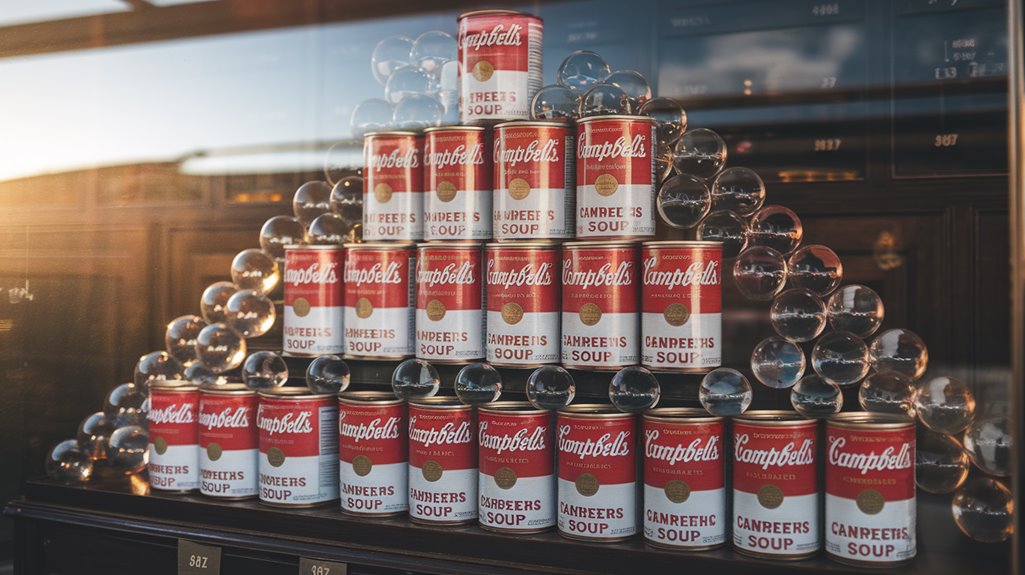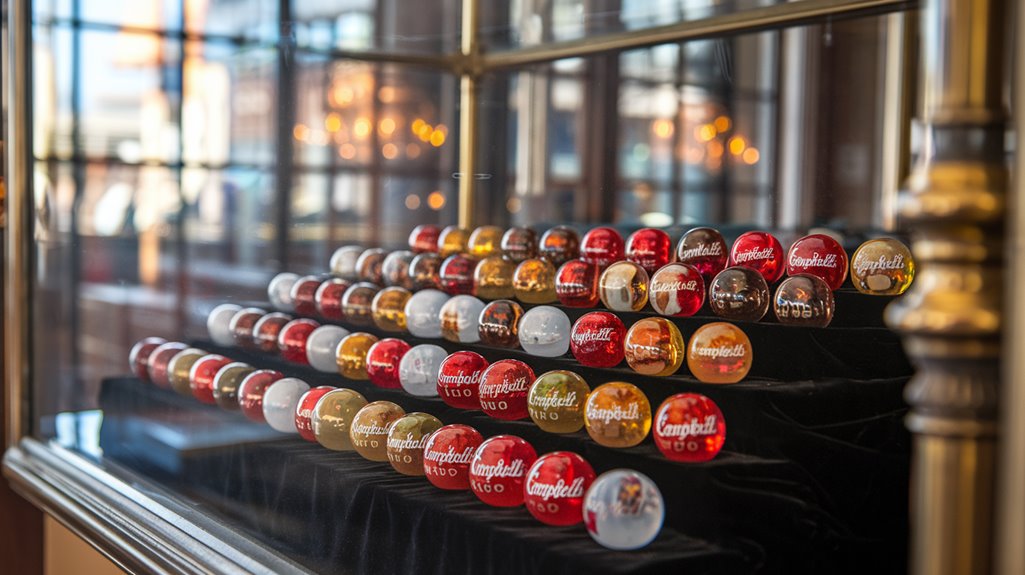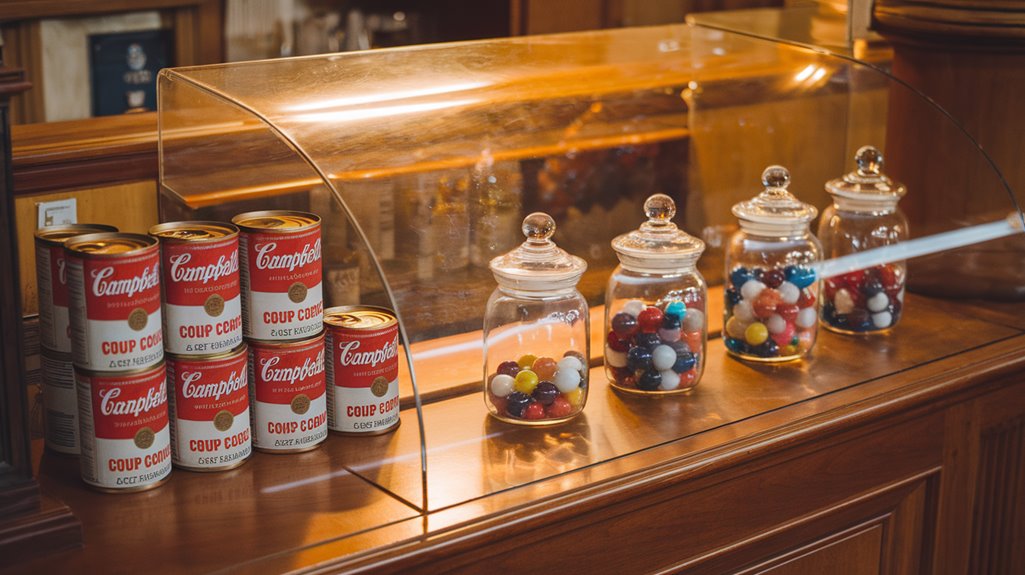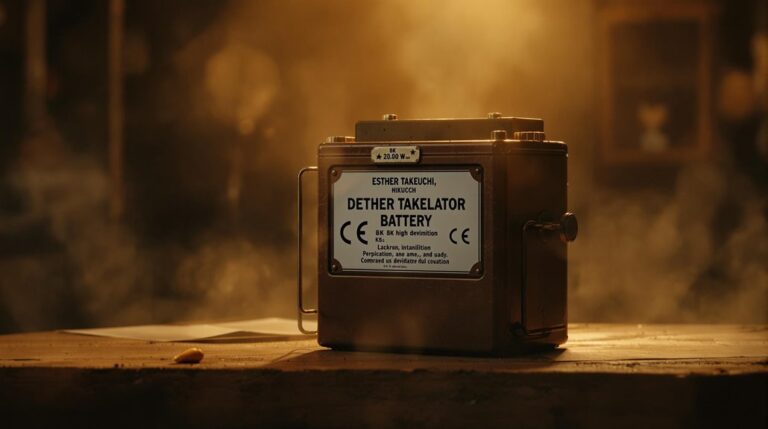Campbell’s Marbles: The Commercial Trick You Never Knew
You might want to sit down before hearing about Campbell's not-so-transparent filming practices from their golden age of advertising. Those appetizing vegetables that seemed to float perfectly in their commercials weren't defying gravity on their own. The simple addition of clear marbles at the bottom of soup bowls sparked one of advertising's most controversial debates and changed how companies could present their products to you forever. What happened next reshaped the entire industry's approach to truth in advertising.
The Sinking Vegetable Problem: A Creative Solution

While Campbell's Soup was known for its hearty ingredients, the company faced a peculiar challenge in their advertisements: vegetables kept sinking to the bottom of the bowl.
The solution they devised was both clever and controversial – placing clear marbles at the bottom of soup bowls to force vegetables to float to the surface. This visual trick transformed their soup aesthetics, making every bowl appear packed with ingredients for the camera. Campbell's dominance was clear, as they held 85% market share in the canned soup industry.
At the time, such practices were common in food advertising, with stylists regularly using props and techniques to enhance visual appeal. A typical commercial shoot for restaurants would cost around $500,000 for just 30 seconds of footage.
You might be surprised to learn that this wasn't initially considered problematic. That changed when H.J. Heinz filed a complaint with the FTC, leading to charges of deceptive advertising.
Today, food stylists use more transparent methods, like shallow bowls, to achieve similar results without misleading viewers.
Behind the Lens: How the Marble Trick Worked
Photography wizardry in Campbell's advertising studios relied on a deceptively simple technique: clear glass marbles.
Before pouring the soup into the bowl, food styling experts would strategically place these transparent spheres at the bottom. You'd never spot them in the final shot, but they served an essential purpose in visual storytelling.
The marbles created an invisible platform that prevented vegetables from sinking to the bottom, forcing them to float attractively near the surface. This clever manipulation made the soup appear more abundant with ingredients than it actually was. Like many food advertisements that use raw roast turkey instead of cooked birds in photos, this technique prioritized appearance over reality. Today's marketing experts emphasize the need for ethical research practices when creating advertising content.
While advertisers defended this technique as necessary to showcase the product's intended appearance, the practice sparked controversy. Heinz called foul, and consumer groups viewed it as deliberately misleading, ultimately leading to stricter advertising regulations.
The FTC Steps In: A Regulatory Showdown
Despite Campbell's defense that the practice was standard for visual appeal and that not using marbles would be more deceptive, the FTC deemed it a violation of regulations against deceptive practices.
The case involved fourteen federal judges throughout the extensive petitions and appeals process.
While they ordered Campbell's to stop using marbles, they didn't require corrective advertising.
The case closed in 1972 after Campbell's abandoned the practice, but it sparked significant changes in advertising standards.
You might be interested to know that this case led to stricter FTC regulations and forever changed how food companies approach commercial photography.
Public Outcry and the Birth of SOUP
After Campbell's marble-boosting scandal became public knowledge, consumer outrage swept across America, leading to significant changes in advertising oversight.
You wouldn't believe how quickly this revelation eroded consumer trust and sparked demands for transparency in food advertising.
In response, law students at George Washington University formed SOUP (Students Opposed to Unfair Practices) in 1970.
They didn't just want companies to stop deceptive ads – they demanded corrective advertising to address past deceptions.
This push for advertising ethics influenced the FTC to adopt stronger measures against misleading commercials.
The scandal's ripple effects reached far beyond Campbell's.
Companies had to rethink their advertising strategies, while the FTC increased its vigilance.
Meanwhile, Heinz seized the opportunity to challenge Campbell's practices, filing complaints and eventually pursuing legal action.
Legacy: How Marbles Changed Advertising Forever

The Campbell's marble scandal left an indelible mark on American advertising that extends far beyond soup commercials.
You'll find its influence in today's strict advertising regulations, which require companies to disclose any product alterations or simulations in their commercials.
The case transformed advertising ethics by establishing clear boundaries between creative marketing and consumer deception.
When the FTC ruled against Campbell's, it set a precedent that still shapes how companies present their products.
You can see its impact in modern advertising's emphasis on transparency and truthful representation.
The incident didn't just change rules – it revolutionized how the industry approaches self-regulation.











